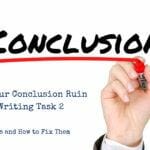Introduction – Unraveling the Mystery of True, False, Not Given in IELTS Reading
The International English Language Testing System (IELTS) is a popular standardized test that evaluates your English language proficiency. Many students and professionals take this test to demonstrate their skills for academic or work-related purposes.
One of the most challenging and often misunderstood parts of the IELTS Reading test is the “True, False, Not Given” question type. These questions can be intimidating for many test-takers, as they require a keen eye for detail and a deep understanding of the passage.
In this blog post, we will unravel the mystery surrounding True, False, Not Given questions in the IELTS Reading section. We will explore the ins and outs of this question type, share practical tips and strategies for tackling them, and discuss common pitfalls to avoid.
By the end of this guide, you will have a better understanding of what these questions are, how to approach them effectively, and how to improve your scores.
Understanding the True, False, Not Given Questions
Before diving into tips and strategies, it’s essential to have a clear understanding of what “True, False, Not Given” questions are and why they are included in the IELTS Reading test.
These questions assess your ability to read for specific details, analyze the information, and draw accurate conclusions based on the text.
In a True, False, Not Given question, you will be provided with a statement, and your task is to determine whether the statement is true, false, or not given based on the information presented in the passage. Let’s break down each of these three possible outcomes:
1. True
The statement accurately reflects the information in the passage. It may not be a word-for-word match, but the meaning is consistent with what the author has written.
Example:
Passage: “The invention of the printing press revolutionized the way information was disseminated and led to an increase in literacy rates.”
Statement: “The printing press played a significant role in raising literacy levels.”
Outcome: True
2. False
The statement contradicts the information in the passage or presents an inaccurate interpretation of the text.
Example:
Passage: “Polar bears primarily feed on seals, which they catch from the edge of the ice.”
Statement: “Polar bears rely on a variety of prey, including seals and fish.”
Outcome: False
3. Not Given
The statement cannot be verified based on the information in the passage. There may be some related information, but it is not sufficient to confirm or refute the statement.
Example:
Passage: “The Great Wall of China was built to protect the Chinese empire from invasion and served as a symbol of power and authority.”
Statement: “The Great Wall of China was successful in preventing all enemy invasions.”
Outcome: Not Given
It’s important to note that True, False, Not Given questions are not about your prior knowledge or opinions on the topic. Instead, they focus solely on your ability to locate and analyze the information provided in the reading passage.
In the next section, we’ll dive into tips and strategies that will help you tackle True, False, Not Given questions more effectively, ultimately improving your IELTS Reading score.
The Difference Between False and Not Given – Decoding the Confusion
One of the most common challenges candidates face when answering True, False, Not Given questions in the IELTS Reading test is distinguishing between “False” and “Not Given.” Understanding the difference between these two outcomes is crucial for improving your performance on this question type.
In this section, we will explore the key differences between “False” and “Not Given,” explain why candidates often confuse these two outcomes, and provide examples to help you better understand and differentiate between them.
False vs. Not Given:
- False: A statement is considered “False” when the information presented in the passage contradicts the statement or provides an inaccurate interpretation of the text. In other words, the passage explicitly disproves the statement.
- Not Given: A statement is considered “Not Given” when there isn’t enough information in the passage to confirm or refute the statement. The passage may contain some related information, but it is insufficient to determine the truth or falsehood of the statement.
Why Candidates Confuse False and Not Given:
Candidates often confuse “False” and “Not Given” for several reasons:
- They may not read the passage carefully enough to determine if the statement is explicitly contradicted or if there’s simply not enough information to make a determination.
- They might mistakenly believe that “Not Given” means the information isn’t explicitly stated in the passage, even if the passage contradicts the statement.
- They may struggle with understanding synonyms and paraphrasing, leading to confusion when the passage uses different words to convey the same meaning as the statement.
- They might rely on their personal knowledge or opinions, which can lead to incorrect assumptions about whether a statement is false or not given.
Examples
Let’s look at some examples to illustrate the difference between “False” and “Not Given.”
Example 1:
Passage: “The automobile industry has seen a surge in electric vehicle production in recent years, driven by advances in battery technology and growing consumer demand.”
Statement: “The automobile industry has experienced a decline in electric vehicle production in recent years.”
Outcome: False
Explanation: The statement is directly contradicted by the passage, which states that there has been a surge in electric vehicle production.
Example 2:
Passage: “Migratory birds travel thousands of miles each year, navigating using a combination of landmarks, the position of the sun, and Earth’s magnetic field.”
Statement: “Migratory birds rely solely on Earth’s magnetic field for navigation during their annual journeys.”
Outcome: False
Explanation: The statement is contradicted by the passage, which explains that migratory birds use multiple methods for navigation, not just Earth’s magnetic field.
Example 3:
Passage: “In recent years, the rise of e-commerce has led to increased competition among traditional brick-and-mortar retailers, forcing many to adapt their business models.”
Statement: “E-commerce has caused a significant decrease in the number of traditional brick-and-mortar retailers.”
Outcome: Not Given
Explanation: Although the passage discusses the impact of e-commerce on traditional retailers, it does not provide enough information to determine whether the number of brick-and-mortar retailers has significantly decreased.
By understanding the key differences between “False” and “Not Given” and practicing with examples, you will become better equipped to differentiate between these two outcomes and improve your performance on True, False, Not Given questions in the IELTS Reading test.
Tips and Strategies for Tackling True, False, Not Given Questions
Now that you have a solid understanding of True, False, Not Given questions, let’s explore some practical tips and techniques to help you approach these questions effectively and improve your scores.
1. Skim the passage first
Before attempting any questions, it’s crucial to skim through the passage quickly to get a general idea of the content and structure. This will help you understand the main theme and better locate specific information when answering the True, False, Not Given questions.
2. Read the statements carefully
Take your time to read and understand each statement. Pay attention to keywords and phrases, as they will guide you in identifying the relevant section of the passage. For example, if the statement mentions a specific date or name, look for that information in the text.
3. Locate the relevant information
Once you’ve identified the keywords, scan the passage to find the section that addresses the statement. Remember, the information may not be presented in the same order as the statements, so be prepared to jump between sections.
4. Compare and contrast
When you locate the relevant information, carefully compare it to the statement. Consider whether the statement is entirely true, completely false, or if there’s not enough information to make a determination. Be cautious of synonyms and paraphrasing – the passage may use different words to convey the same meaning as the statement.
5. Don’t rely on your knowledge
Remember that your answer should be based solely on the information provided in the passage. If a statement aligns with your prior knowledge, but there is no evidence to support it in the text, the correct answer is “Not Given.”
6. Manage your time effectively
Time management is crucial during the IELTS Reading test. Allocate a specific amount of time for each question and avoid spending too much time on a single statement. If you’re unsure about a question, make your best guess, mark it for review, and move on to the next one.
Let’s apply these strategies to the earlier polar bear example:
Statement: “According to the passage, climate change is the main reason for the decline in polar bear populations.”
Keywords: climate change, main reason, decline, polar bear populations
After skimming the passage, you locate the relevant information and read:
“Researchers have identified various factors contributing to the decline in polar bear populations, including habitat loss due to climate change, pollution, and overhunting.”
Comparing this information to the statement, you can conclude that the statement is False, as the passage states that climate change is just one of several factors contributing to the decline in polar bear populations.
In the next section, we’ll discuss common pitfalls candidates face when answering True, False, Not Given questions and suggest ways to avoid them.
Common Pitfalls and How to Avoid Them
Even with the best strategies in hand, some common pitfalls can trip up candidates when tackling True, False, Not Given questions in the IELTS Reading test. By being aware of these mistakes and learning how to avoid them, you can improve your chances of answering these questions correctly and boost your overall score.
1. Overlooking synonyms and paraphrasing
The passage may use different words or phrases to convey the same meaning as the statement. To avoid this pitfall, train yourself to recognize synonyms and paraphrasing and consider the overall meaning of the information, rather than relying solely on identical wording.
2. Misinterpreting “Not Given”
Some candidates mistakenly select “Not Given” when they can’t find the exact information in the passage. Remember that “Not Given” means there isn’t enough information in the passage to confirm or refute the statement. If the passage contradicts the statement, the correct answer is “False.”
3. Relying on personal knowledge or opinions
As mentioned earlier, your answers should be based solely on the information provided in the passage. Avoid using your prior knowledge or opinions to answer the questions, as this can lead to incorrect responses.
4. Mismanaging time
Spending too much time on a single statement can negatively impact your overall performance. Allocate a specific amount of time for each question and practice time management techniques to ensure you have enough time to address all questions in the test.
5. Neglecting to read the passage carefully
It’s crucial to read the passage carefully and pay close attention to details. Skipping over information or not reading the passage closely enough can lead to mistakes in answering True, False, Not Given questions.
To avoid these common pitfalls, follow these recommendations:
- Practice identifying synonyms and paraphrasing in various reading materials.
- Clearly understand the difference between “False” and “Not Given” and when to choose each option.
- Focus solely on the information provided in the passage and avoid relying on personal knowledge or opinions.
- Develop and practice time management techniques to help you navigate the IELTS Reading test effectively.
- Engage in active reading and practice skimming and scanning techniques to locate relevant information in the passage quickly and accurately.
By being aware of these pitfalls and learning how to avoid them, you’ll be better equipped to tackle True, False, Not Given questions and improve your performance in the IELTS Reading test. In the next section, we’ll provide some sample questions with explanations to help you practice and familiarize yourself with this question type.
Practice Makes Perfect – Sample True, False, Not Given Questions
To help you practice and familiarize yourself with True, False, Not Given questions, we’ve provided a few sample questions with explanations. Remember to apply the tips and strategies discussed in this guide as you work through these examples.
Passage:
The invention of the telephone by Alexander Graham Bell in 1876 revolutionized the way people communicated with each other. The first telephones were bulky and expensive, and only a few privileged individuals could afford them. As the technology advanced, telephones became more accessible and affordable, leading to their widespread use. By the early 20th century, telephone lines had been installed in most urban areas, and people could easily communicate with friends, family, and business associates over long distances.
Sample Questions:
1. Statement: The telephone was invented in the 19th century.
Outcome: True
Explanation: The passage states that Alexander Graham Bell invented the telephone in 1876, which is in the 19th century.
2. Statement: In the beginning, everyone could afford a telephone.
Outcome: False
Explanation: The passage mentions that the first telephones were bulky, expensive, and only available to a few privileged individuals, which contradicts the statement.
3. Statement: By the mid-20th century, telephone lines had reached most rural areas.
Outcome: Not Given
Explanation: The passage indicates that telephone lines had been installed in most urban areas by the early 20th century, but it does not provide any information about rural areas or the mid-20th century.
As you work through these sample questions, remember to apply the strategies discussed in this guide, such as skimming the passage, reading the statements carefully, locating the relevant information, and managing your time effectively. With practice and persistence, you will improve your skills and increase your confidence in tackling True, False, Not Given questions in the IELTS Reading test. The best reference for practicing would be Cambridge IELTS 1-17 books which include the past official IELTS reading test questions.
In the final section, we’ll summarize the main points of this guide and encourage you to continue practicing and refining your skills for success in the IELTS Reading section.
Conclusion – Mastering True, False, Not Given in IELTS Reading
In this comprehensive guide, we have unraveled the mystery surrounding True, False, Not Given questions in the IELTS Reading section. By understanding the question type, applying practical tips and strategies, and being aware of common pitfalls, you can improve your performance on this often challenging part of the test.
To recap, here are the key takeaways from this guide:
- Understand the True, False, Not Given question type and its purpose in assessing your reading comprehension and critical thinking skills.
- Skim the passage first to get a general idea of the content and structure.
- Read the statements carefully and pay attention to keywords and phrases.
- Locate the relevant information in the passage and compare it to the statement to determine if it’s true, false, or not given.
- Avoid relying on personal knowledge or opinions when answering questions.
- Practice effective time management techniques to ensure you address all questions within the allotted time.
Remember, practice makes perfect. Continue working on your skimming, scanning, and critical thinking skills by tackling a variety of reading materials and practice questions. As you refine your skills and gain confidence in your ability to answer True, False, Not Given questions, you’ll be one step closer to achieving your desired score in the IELTS Reading test.
Keep practicing, stay focused, and best of luck on your IELTS journey!





0 Comments